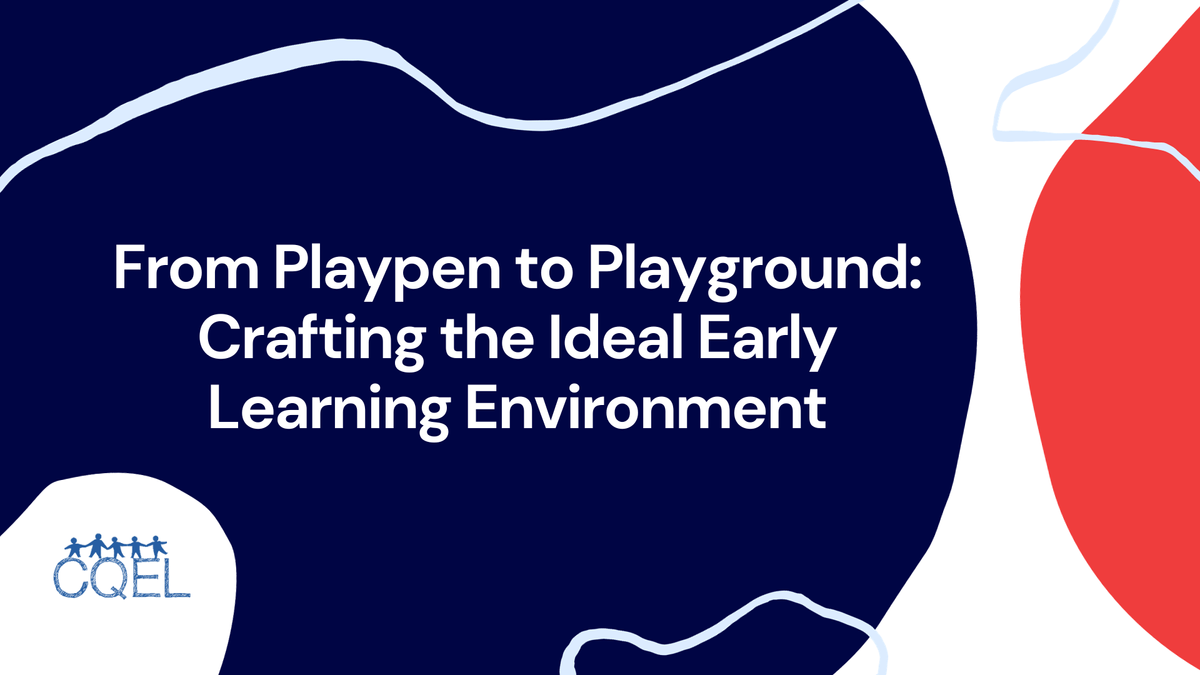From Playpen to Playground: Crafting the Ideal Early Learning Environment
As early childhood educators, designing this early learning environment becomes our artistic masterpiece, a space that sparks curiosity, ignites learning, and nurtures little minds and bodies in bloom.

Imagine a child's first steps outside the playpen – eyes wide with wonder, fingers tracing the world's textures. This isn't just any environment; it's a canvas, a stage, a laboratory bursting with potential for exploration and growth. As early childhood educators, designing this early learning environment becomes our artistic masterpiece, a space that sparks curiosity, ignites learning, and nurtures little minds and bodies in bloom.
So, how do we transform sterile spaces into vibrant tapestries of development? Here are some brushstrokes to guide your artistry:
1. Zoning for Exploration
Ditch the cookie-cutter classroom and embrace diversity. Craft distinct zones that cater to different learning styles and needs. A cozy reading nook invites introspective whispers, while a bustling construction zone echoes with the clatter of blocks and the thrill of teamwork. Don't forget messy corners for sensory exploration and quiet retreats for emotional regulation – every child deserves a space to be their authentic selves.
2. Nature's Embrace
Let the outdoors become your partner in learning. Natural light bathes spaces in warmth, while a sprawling garden nurtures curiosity about the world beyond walls. Mud puddles turn into science experiments, fallen leaves become counting tools, and birds chirping become an orchestra of discovery. Open the windows, invite the whispers of nature in, and watch the wonders unfold.
3. Materials that Sing
Forget rows of identical desks. Instead, curate a symphony of materials that sing to different senses. Soft cushions whisper comfort, while textured surfaces beg to be touched. Open-ended manipulatives, like blocks and scarves, become props for endless imaginary journeys. Spark creativity with musical instruments, art supplies, and even repurposed objects – the possibilities are as limitless as a child's imagination.
4. Collaboration, not Competition
Ditch the rows and circles, and gather children around inviting tables and shared workspaces. Encourage collaborative projects, where little hands build castles together, and budding scientists share their discoveries. Remember, learning isn't just a solo act; it's a vibrant tapestry woven through shared experiences and joyful connections.
5. A Feast for the Senses
Learning isn't just for the eyes and ears. Fill the environment with a sensory feast. Let colorful murals dance on the walls, while soothing music washes over the space. Don't underestimate the power of scents – the aroma of freshly baked bread can evoke memories of home and comfort, while the earthy fragrance of the outdoors can spark a love for nature.
6. A Symphony of Change
Don't let your masterpiece become static. Early childhood is a time of constant growth and discovery, so let your environment reflect that dynamism. Rotate materials regularly, introduce new challenges, and encourage children to participate in shaping their space. Their changing interests should be the conductor of this symphony, ensuring the environment remains constantly relevant and engaging.
Remember, the ideal early learning environment is not a static picture but a vibrant performance – a space that evolves with the children it cradles. By embracing these tips, you can transform your classroom into a masterpiece of wonder, where every child finds their stage, takes their first steps into the world of learning, and discovers the limitless potential that lies within.
Ready to get started? Here are some additional resources to fuel your inspiration:
- Early Childhood Learning & Knowledge Center (ECLKC): https://eclkc.ohs.acf.hhs.gov/blog/building-positive-learning-environments-young-children-starts-you
- National Association for Environmental Education (NAEE): https://www.naaee.org/
- Children's Museum of Sonoma County: https://www.cmosc.org/benefits-of-art-during-early-childhood/
Let's create spaces that are as unique and vibrant as the little minds they nurture!
